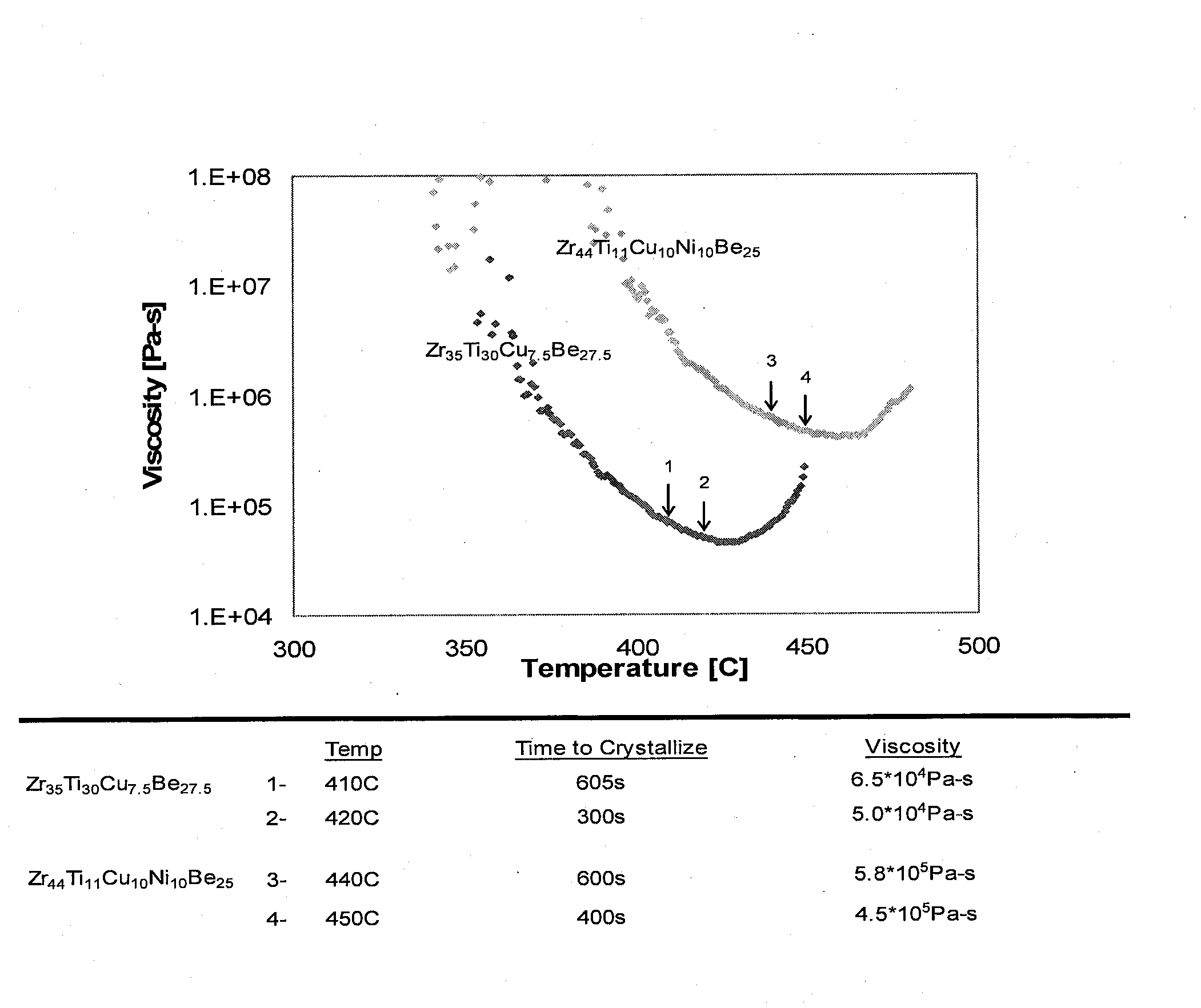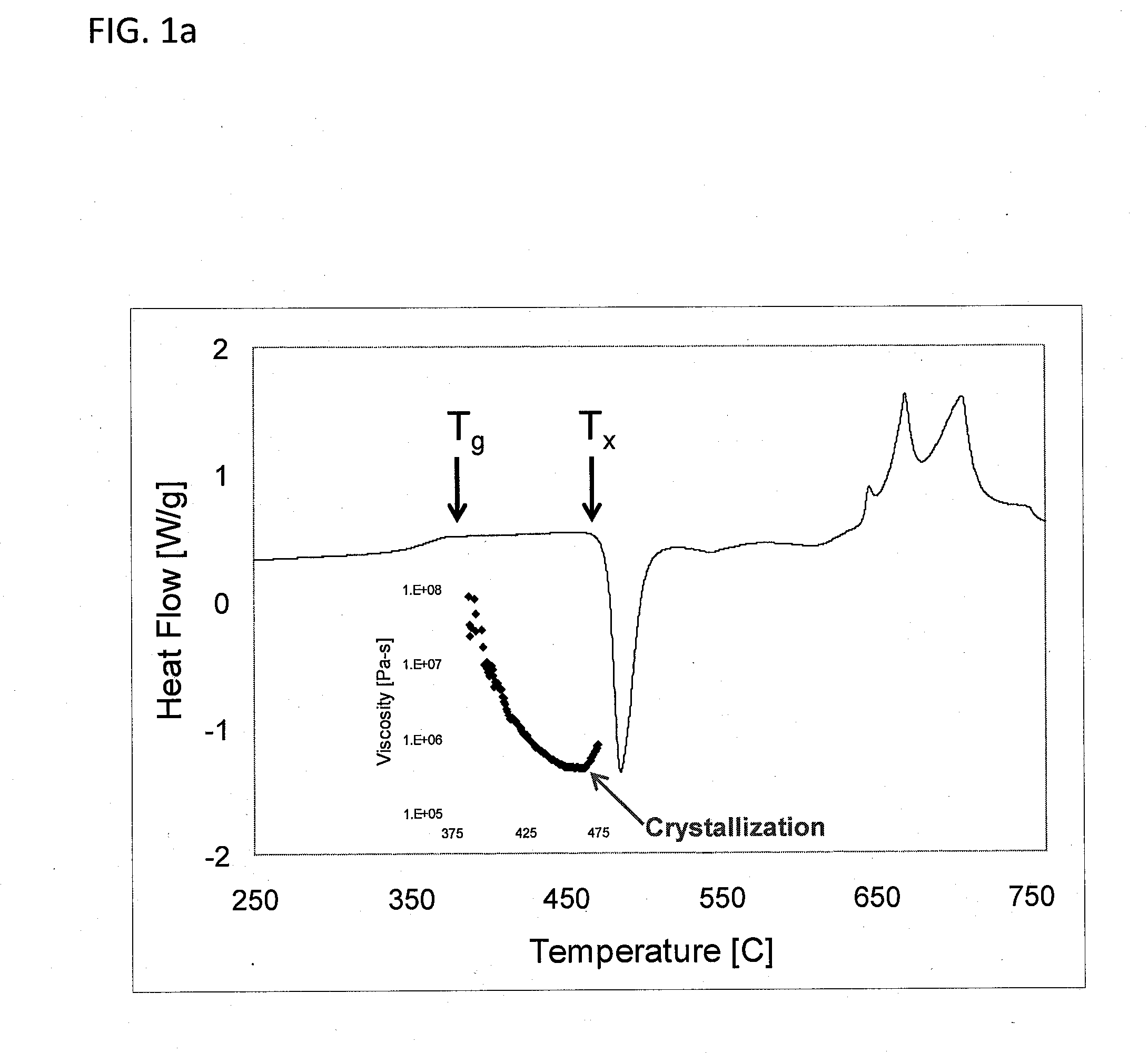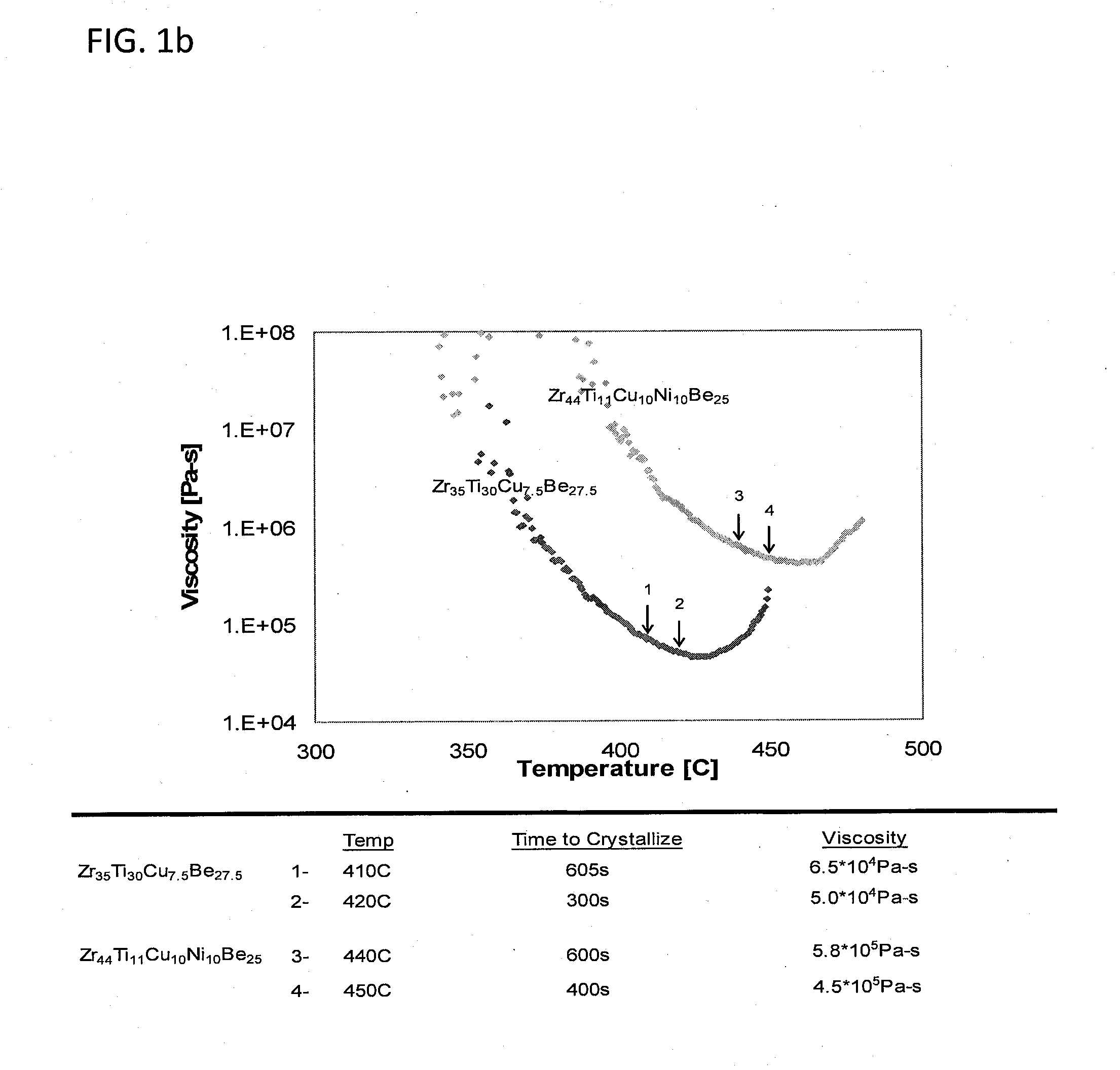Thermoplastically processable amorphous metals and methods for processing same
a technology of amorphous metals and thermoplastic processing, which is applied in the field of high-strength amorphous alloys, can solve the problems of limiting the ability to make parts with high aspect ratios, limiting the ability to make high-quality casts or manufacturing structures with complex geometries, and unable to make large-scale pieces
- Summary
- Abstract
- Description
- Claims
- Application Information
AI Technical Summary
Benefits of technology
Problems solved by technology
Method used
Image
Examples
example 1
Alloy Formation and Properties
[0070]Although any suitable alloy formation process may be used to form the materials of the current invention, in the following examples mixtures of elements of purity ranging from 99.9% to 99.99% were alloyed by induction melting on a water cooled copper boat under a Ti-gettered argon atmosphere. Typically 5 g ingots were prepared. Each ingot was flipped over and re-melted at least three times in order to obtain chemical homogeneity.
[0071]A Philips X'Pert Pro X-ray diffractometer and a Netzsch 404C differential scanning calorimeter (DSC) (performed at a constant heating rate 0.33 K / s) were utilized to confirm the amorphous natures and to examine the isothermal behaviors in the SCLR of these alloys.
[0072]The viscosity of Zr35Ti30Cu7.5Be27.5 as a function of temperature in the SCLR was studied using a Perkin Elmer TMA7 in the parallel plate geometry as described by Bakke, Busch, and Johnson. (E. Bakke, R. Busch, W. L. Johnson, Applied Physics Letters 19...
example 2
Injection Molding Application
[0083]As discussed above, the current invention is also directed to novel methods of forming the TPF alloys of the current invention. In FIG. 10 photographs are provided of parts made in accordance with the novel injection molding process disclosed herein next to a polymer part created from the same mold. (From top to bottom: Top Metallic glass Zr35Ti30Cu7.5Be27.5 injected at 400 C with 10000 PSI, 2nd same glass injected at 380 C with 45000 PSI, 3rd same glass injected at 420 C with 45000 PSI, and 4th Polymer part injected at 220 C with 5000 PSI, all parts are as cast.) Slight polishing after molding with 320 grit paper removes any oxide layer.
[0084]Due to the viscous nature of metallic glasses in the region between Tg and Tx, the sprue and nozzle commonly used for plastic injection molding were replaced by a thin washer that acted as a nozzle. The TPF alloy Zr35Ti30CU7.5Be27.5, in accordance with the current invention was used as the amorphous feedstock...
PUM
| Property | Measurement | Unit |
|---|---|---|
| Temperature | aaaaa | aaaaa |
| Temperature | aaaaa | aaaaa |
| Fraction | aaaaa | aaaaa |
Abstract
Description
Claims
Application Information
 Login to View More
Login to View More - R&D
- Intellectual Property
- Life Sciences
- Materials
- Tech Scout
- Unparalleled Data Quality
- Higher Quality Content
- 60% Fewer Hallucinations
Browse by: Latest US Patents, China's latest patents, Technical Efficacy Thesaurus, Application Domain, Technology Topic, Popular Technical Reports.
© 2025 PatSnap. All rights reserved.Legal|Privacy policy|Modern Slavery Act Transparency Statement|Sitemap|About US| Contact US: help@patsnap.com



